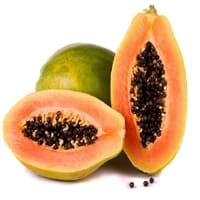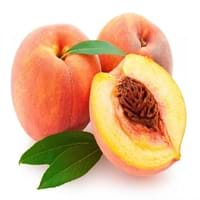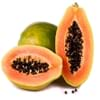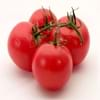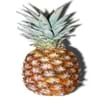Health Benefits
Arthritis prevention, Asthma treatment, Cancer prevention, Heart care, Prevents macular degeneration, Prevents rheumatoid
Cancer prevention, Heart care, Improves eye vision, Reduces stress, Regulation of heart rate
General Benefits
Anti-inflammatory properties, Boosts immune system, Digestive aid, Healing of wounds, Maintains healthy cholesterol level, Strengthens bones
Anti oxidant properties, Eye care
Skin Benefits
Anti-aging benefits, Hydrates skin, Skin revitalization, Treatment of acne, Treatment of dark spots
Heals sunburn, Reduces wrinkles, Treatment of skin diseases
Hair Benefits
Good conditioner, Promotes longer and healthier hair, Softening mask, Treatment of dandruff
Prevents hair loss
Allergy Symptoms
Abdominal pains, Carotenemia on excessive consumtion, Latex Allergy
Abdominal pains, Anaphylaxis, Breathing difficulty, Diarrhea, Dizziness, Hives, Itching, Lightheadedness, Nasal congestion, Nausea, Swelling of mouth, tongue or lips, Tingling sensation in mouth, Vomiting, Wheezing
Side Effects
Allergic reaction, Skin problems, Possibly unsafe during pregnancy
Allergic reaction
Best Time to Eat
As a snack in the late afternoon, Don't consume at night and before bed, Don't eat after meal
As a snack in the late afternoon, Eat the fresh ones, avoid mixing with any other foods, don't eat after meal., Morning time (before lunch)
Vitamin B5 (Pantothenic Acid)
Vitamin C (Ascorbic Acid)
Vitamin K (Phyllochinone)
Phytosterol
Not Available
Calories in Fresh Fruit with Peel
Not Available
Calories in Fresh Fruit without Peel
Not Available
Type
Melon, Tree fruit
Tree fruit
Season
All seasons
Autumn, Summer
Varieties
Coorg Honey Dew, Pusa Dwarf, Pusa Giant, Pusa Majesty, Pusa Delicious, Pusa Dwarf, Solo, Ranchi, Taiwan-785 and Taiwan-786
Reliance, Sweet Scarlet, Spring Snow, Sugar May, Santa Rosa, Red Beauty, Glowhaven, Cresthaven and Redhaven Peaches
Color
Orange, Yellow
Pink, Red, White, Yellow, Yellowish-orange
Inside Color
Orange
Yellow
Taste
Luscious, Sweet
Sweet
Origin
Mexico, Central America
China
Soil Type
Rocky, Sandy, Well-drained
Sandy loam, Well-drained
Climatic Conditions
Warm, Without frosts
Cold, Warm
Facts about
- Papaya seeds show contraceptive effects in male monkeys.
- Their seeds are used as a replacement for black pepper in some nations due to peppery taste.
- Papaya is known by funny names like paw paw or papaw and the mamao.
- In china, peaches are considered as a symbol of good luck.
- From 1982, august is National peach month in USA.
- In roman times, Peaches were also called as Persian apples, as people assumed that they originated from Persia.
Other Countries
Brazil, Indonesia, Mexico, Nigeria
Greece, Italy, Spain, United States of America
Top Importer
United States of America
Germany
Top Exporter
Mexico
Spain
Botanical Name
Carica papaya
Prunus persica
Synonym
Not Available
Not Available
Subkingdom
Tracheobionta
Tracheobionta
Division
Magnoliophyta
Magnoliophyta
Class
Magnoliopsida
Magnoliopsida
Subclass
Dillenhidae
Rosidae
Order
Brassicales
Rosales
Family
Caricaceae
Rosaceae
Species
C. papaya
P. persica
Generic Group
Papaya
Rose
Difference Between Papaya and Peach
We might think that Papaya and Peach are similar with respect to nutritional value and health benefits. But the nutrient content of both fruits is different. Papaya and Peach Facts such as their taste, shape, color, and size are also distinct. The difference between Papaya and Peach is explained here.
The amount of calories in 100 gm of fresh Papaya and Peach with peel is Not Available and 39.00 kcal and the amount of calories without peel is 43.00 kcal and Not Available respectively. Thus, Papaya and Peach belong to Low Calorie Fruits and Low Calorie Fruits category.These fruits might or might not differ with respect to their scientific classification. The order of Papaya and Peach is Brassicales and Rosales respectively. Papaya belongs to Caricaceae family and Peach belongs to Rosaceae family. Papaya belongs to Carica genus of C. papaya species and Peach belongs to Prunus genus of P. persica species. Beings plants, both fruits belong to Plantae Kingdom.
